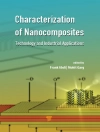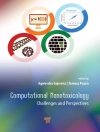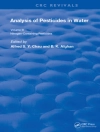Welches Monitoring-Verfahren ist für einen gegebenen Membranprozess geeignet? Die Auswahl fällt oft schwer — und dieser Band kommt zur rechten Zeit! Kritisch vergleichen die Autoren verschiedene Methoden mit ihren Grundlagen, Einsatzmöglichkeiten, Stärken, Schwächen und Grenzen, wobei sie ihre Aussagen anhand von Fallstudien nachvollziehbar belegen. Im Einzelnen behandelt werden Lichtmikroskopie, Elektronenmikroskopie, elektrische, akustische und Laserverfahren sowie prozessorientierte Ansätze.
Spis treści
INTRODUCTION: OPPORTUNITIES AND CHALLENGES OF REAL TIME MONITORING ON MEMBRANE PROCESSES
Introduction
Microscopic Techniques in Membrane Characterization
Electrical, Laser, Magnetic and Acoustic Techniques in Membrane or Membrane Process Characterization
Process Oriented Monitoring Techniques
Future Scope of Sensors in Membrane Process Characterization
PART I: Optical and Electronic Microscopic Techniques on Membrane Process Characterization
DIRECT VISUAL OBSERVATION OF MICROFILTRATION MEMBRANE FOULING AND CLEANING
Introduction
Particle Deposition
Particle Removal
MICROSCOPY TECHNIQUES FOR THE CHARACTERIZATION OF MEMBRANE MORPHOLOGY
Introduction
Membrane Characterization Morphology Parameters
Microscopy Techniques for Membrane Morphology Characterization
Case Studies
CONFOCAL SCANNING LASER MICROSCOPY: FUNDAMENTALS AND USES ON MEMBRANE FOULING CHARACTERIZATION AND OPPORTUNITIES FOR ONLINE MONITORING
Introduction
Fundamentals of Confocal Scanning Laser Microscopy
Applications of CSLM to Membranes and Membrane Processes
Evaluating Limits and Prospects of CSLM in the Characterization of Membranes and Membrane Processes
SCANNING PROBE MICROSCOPY TECHNIQUES IN THE INVESTIGATION OF HOMOGENEOUS AND HETEROGENEOUS DENSE MEMBRANES: THE CASE FOR GAS SEPARATION MEMBRANES
Introduction
Microscopic Techniques
Gas Separation Membranes
Case Studies
ATOMIC FORCE MICROSCOPY INVESTIGATIONS OF MEMBRANES AND MEMBRANE PROCESSES
Introduction
The Range of Possibilities
Correspondence Between Surface Pore Dimensions from AFM and MWCO
Imaging in Liquid and the Determination of Surface Electrical Properties
Effects of Surface Roughness on Interactions with Particles
'Visualization’ of the Rejection of a Colloid by a Membrane Pore and Critical Flux
The Use of AFM in Membrane Development
CONFOCAL RAMAN MICROSCOPY FOR MEMBRANE CONTENT VISUALIZATION
Introduction
The Raman Effect
Raman Microspectrometry
Confocal Raman Microscopy
Specific Data Processing
Visualization Using Raman Spectroscopy
Membrane Systems Applications
IN SITU CHARACTERIZATION OF MEMBRANE FOULING AND CLEANING USING A MULTIPHOTON MICROSCOPE
Overview
Optical Techniques for Characterization of Membrane Fouling
Partial Review of Fouling and Cleaning
Materials and Methods
Imaging Cake Fouling
Imaging of Protein Fouling
In Situ Characterization of Cell-Protein Fouling
PART II: Electrical, Laser and Acoustic Techniques for Membrane Process Characterization
ELECTRICAL CHARACTERIZATION OF MEMBRANES
Introduction
Electrical Measurements
Experimental
Results of Electrical Measurements for Different Types of Membranes
X-RAY TOMOGRAPHY APPLICATION TO 3D CHARACTERIZATION OF MEMBRANES
Principles of X-Ray Tomography
Application of X-Ray Tomography in the Membrane Field
OPTICAL AND ACOUSTIC METHODS FOR IN SITU CHARACTERIZATION OF MEMBRANE FOULING
Introduction
Approach
In Situ Deposit Characterization with an Optical Method Using a Laser Sheet at Grazing Incidence
In Situ Deposit Characterization with an Acoustic Method
PART III: Process-Oriented Monitoring Techniques
MONITORING OF MEMBRANE PROCESS USING FLUORESCENCE TECHNIQUES: ADVANCES AND LIMITATION
Introduction: Why Use Natural Fluorescence as a Monitoring Technique?
Natural Fluorescence Techniques
Monitoring of Membrane Processes
MEMBRANE EMULSIFICATION PROCESSES AND CHARACTERIZATION METHODS
Introduction
Emulsification Technology
Membrane Emulsification Processes
TOWARDS FOULING MONITORING AND VISUALIZATION IN MEMBRANE BIOREACTORS
Introduction
Factors Affecting Fouling in MBR
Fouling by Biological Material
Fouling Characterization Without Visualization Techniques
Invasive Methods for Fouling Observation
Non-Invasive Observation Methods
MONITORING TECHNIQUE FOR WATER TREATMENT MEMBRANE PROCESSES
Introduction
Development of Fouling Monitoring Techniques
Dynamic Analysis of Online Fouling Monitoring
O autorze
Carme Güell is currently Associate Professor at the Department of Chemical Engineering at the Rovira I Virgili University (Spain). She obtained her Ph D from the University of Barcelona and had post-doctoral positions at the University of California at Davis and the University of Colorado at Boulder. Currently she is serving as Degree Coordinator in the dean’s board of the Enology Faculty in Tarragona.
Montserrat Ferrando is Assistant Professor at the Department of Chemical Engineering at the Rovira I Virgili University. Dr. Ferrando graduated in Chemistry at the University of Valencia in 1992, her doctoral training was obtained at the Federal Research Centre for Nutrition in Karlsruhe (Germany) and in 2001 she obtained her Ph D (European mention) in Chemical Engineering from the Rovira i Virgili University. She spent a post-doctoral visit at the Helmholz Institute for Biomedical Engineering at RWTH Aachen University in Germany (2002).
Francisco López is Associate Professor at the Department of Chemical Engineering of the Rovira I Virgili University. He obtained his Ph D from the University of Barcelona and had post-doctoral positions at the Institute of Chemical Engineering in Toulouse (France) and the Institute of Agro-Food Process Engineering in Agen (France).












